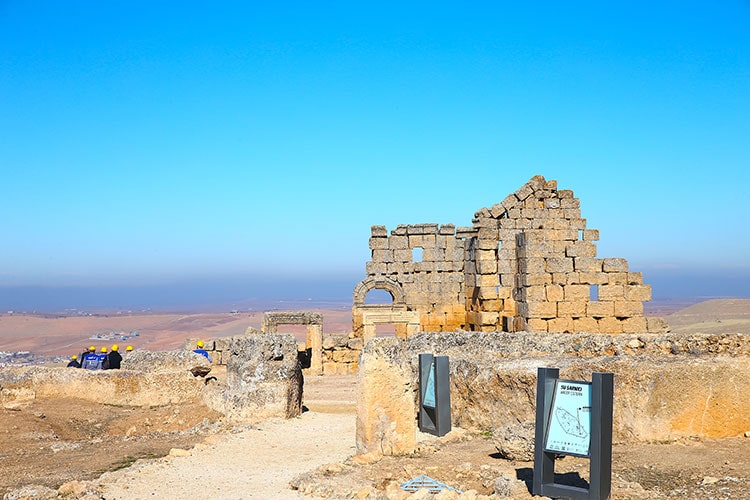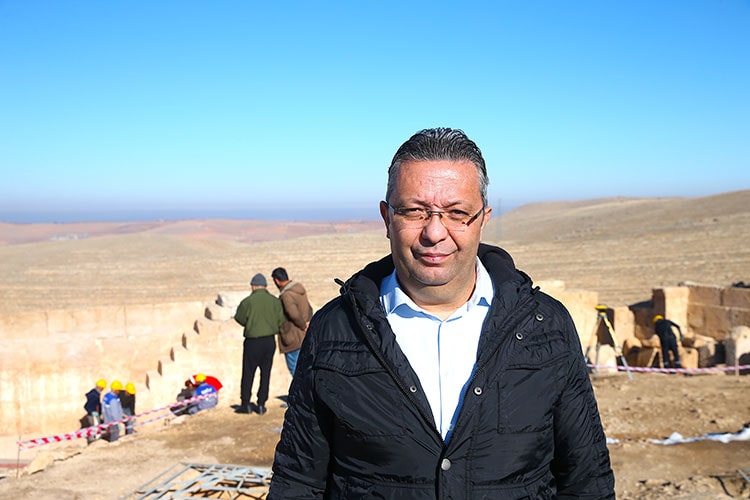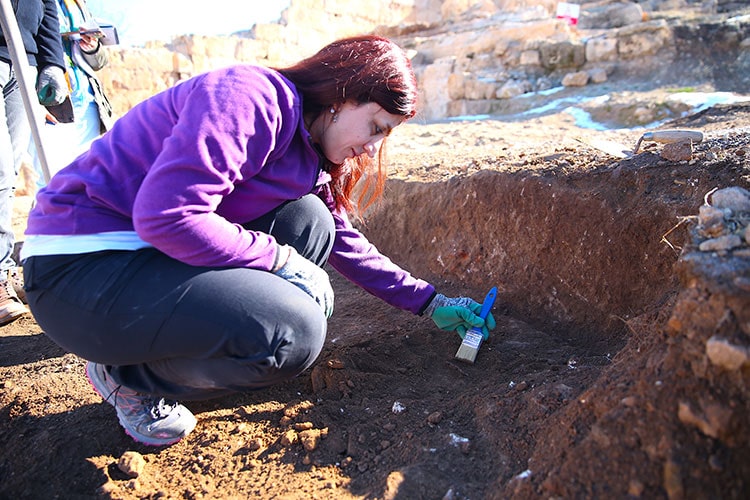
The Area Used by the Participants of Secret Rituals in Zerzevan Castle is Being Revealed
Recent excavations at Zerzevan Castle, near Diyarbakır in southeastern Türkiye, are revealing fascinating new discoveries. Archaeologists are uncovering an area believed to have been used for lodging by participants in secret rituals. This significant finding sheds light on the mysterious practices within this 3,000-year-old Roman military settlement.

Zerzevan Castle, a UNESCO World Heritage Tentative List site, offers a unique glimpse into the region’s Roman past and the later influence of the Mithras cult. The archaeological excavations are led by Prof. Dr. Aytaç Coşkun.

Key Discoveries: From Fortifications to Sacred Spaces
Excavations have unearthed impressive sections of the castle’s fortifications. A 1,200-meter-long section of the walls, reaching 12-15 meters in height, and a 21-meter-high watch and defense tower have been uncovered. Moreover, archaeologists have discovered a church, administrative buildings, residences, grain and weapon storage areas, rock-cut tombs, water channels, and 54 water cisterns. Further discoveries include an underground church, a subterranean shelter capable of housing 400 people, secret passages, and a particularly significant find: an underground Mithras temple dating back to the 4th century AD. The Mithras cult, once widespread in the Roman Empire, declined with the rise of Christianity. This temple provides valuable insights into the spread and practice of this ancient religion.

Ongoing Excavation and Restoration: Preserving a Legacy
The “Legacy for the Future Project,” funded by the Turkish Ministry of Culture and Tourism, supports the ongoing excavation and restoration work at Zerzevan Castle. This work continues year-round. Prof. Coşkun explained, “We are continuing even during the winter season. Excavation and restoration work at the castle will continue uninterrupted as part of this project. Despite winter conditions, our excavations continue for 12 months. Our main focus is the Mithras sacred area and the walls. The castle is an important site for cultural and faith tourism.” Currently, the most intensive work centers on the Mithras sacred area and the castle walls.
Cover Photo: Aziz Aslan/AA
You may also like
- A 1700-year-old statue of Pan unearthed during the excavations at Polyeuktos in İstanbul
- The granary was found in the ancient city of Sebaste, founded by the first Roman emperor Augustus
- Donalar Kale Kapı Rock Tomb or Donalar Rock Tomb
- Theater emerges as works continue in ancient city of Perinthos
- Urartian King Argishti’s bronze shield revealed the name of an unknown country
- The religious center of Lycia, the ancient city of Letoon
- Who were the Luwians?
- A new study brings a fresh perspective on the Anatolian origin of the Indo-European languages
- Perhaps the oldest thermal treatment center in the world, which has been in continuous use for 2000 years -Basilica Therma Roman Bath or King’s Daughter-
- The largest synagogue of the ancient world, located in the ancient city of Sardis, is being restored











Leave a Reply